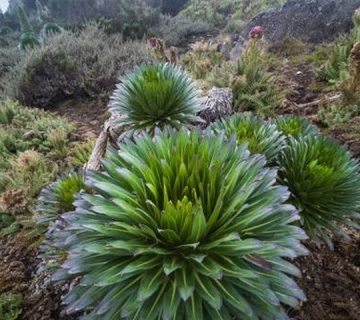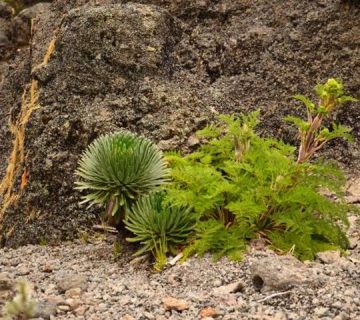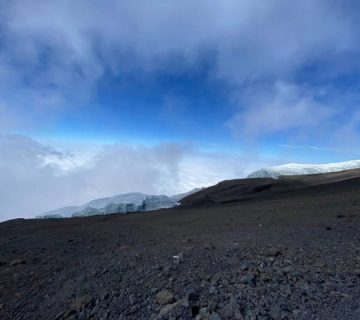Kilimanjaro Wildlife Experiences For Nature Lovers
Nestled in the heart of Tanzania, Mount Kilimanjaro is not just the roof of Africa but also a sanctuary for a diverse range of wildlife. As the premier tour operator in Tanzania, Kilimanjaro Centre for Trekking and Ecotourism (KCTE) invites you to embark on a journey that promises more than just a climb; it offers an intimate encounter with nature’s finest. Let’s delve into the magical wildlife experiences that Kilimanjaro has in store for every nature lover.
Unveil the Secrets of the Kilimanjaro Ecosystem
Kilimanjaro is a mountain that boasts unique ecosystems that change dramatically as you ascend. Each zone offers distinct wildlife viewing opportunities, promising an ever-changing tableau of biodiversity.
The Lush Rainforests
At the base of Kilimanjaro, dense rainforests thrive, enveloping climbers in a lush, green embrace. As you start your trek, the sounds of the forest come alive. The chattering of the Colobus monkeys, the calls of tropical birds, and perhaps, if you’re lucky, the distant roar of a leopard. Here, nature lovers can immerse themselves in the vibrancy of life in its purest form.
The Mystical Moorland
As you ascend, the landscape transforms into the moorland zone, characterized by its tall grasses and rocky outcrops. This zone is the realm of the Kilimanjaro giant lobelia and senecio trees, bizarre yet beautifully adapted to the harsh conditions. It’s also a perfect spot to catch glimpses of the highland birds and small mammals like the four-striped grass mouse.
The Alpine Desert and Beyond
Higher up lies the alpine desert, where the air grows thinner and the landscape more austere. This zone may seem devoid of life at first glance, but it is home to species that have splendidly adapted to the extreme conditions. The eland and the endangered Abbots duiker are rare but thrilling finds for wildlife enthusiasts.
Witnessing the Circle of Life
Kilimanjaro is not only about landscapes and plants; it’s a pivotal part of the local wildlife’s life cycle. The mountain provides water, sourced from its glaciers, sustaining life in the surrounding areas and supporting diverse ecological networks.
The Great Migration Viewpoint
While Kilimanjaro itself is not on the migratory route, the surrounding plains of Amboseli and Tsavo are. These areas support the spectacular phenomena known as the Great Migration, where millions of wildebeest, zebra, and gazelle traverse in search of water and fresh pasture. With KCTE, your climbing expedition can be combined with a safari to these iconic parks, offering a front-row seat to one of nature’s grandest showcases.
Conservation and Community
At KCTE, we believe in responsible tourism. Our expeditions are designed to not only give you an unparalleled wildlife experience but also to contribute to conservation efforts and support the local communities.
Partnering with Local Communities
We partner with local communities who are the stewards of the land. Their invaluable knowledge and traditional practices are integral to the conservation of the Kilimanjaro ecosystem. By choosing KCTE, you are directly contributing to the welfare of these communities, ensuring they benefit from the preservation of this magnificent mountain.
Sustainable Practices
Sustainability is at the core of our operations. We adhere to leave-no-trace principles and implement sustainable practices to minimize environmental impact. Our goal is for future generations to experience the awe-inspiring beauty of Kilimanjaro just as you will.
Plan Your Kilimanjaro Wildlife Expedition
Are you ready to experience the majestic Mount Kilimanjaro and its diverse array of wildlife? Kilimanjaro Centre for Trekking and Ecotourism (KCTE) offers tailored climbing experiences that cater to all fitness levels and interests. Whether you are an avid birdwatcher, a wildlife enthusiast, or simply a lover of nature, Kilimanjaro has something extraordinary for you.
Customizable Tours
Our tours are fully customizable. Choose from a variety of routes, each offering a unique perspective of Kilimanjaro’s ecosystems and wildlife. Our experienced guides ensure a safe, informative, and unforgettable adventure.
Why Choose KCTE?
- Expert Guides: Our guides are trained in wildlife conservation, first aid, and mountain safety.
- Community-Focused: We empower local communities through sustainable tourism.
- Eco-Friendly: We’re committed to preserving Kilimanjaro’s natural beauty for future generations.
Frequently Asked Questions
What wildlife can I see on Mount Kilimanjaro?
On Kilimanjaro, you can encounter a variety of wildlife, including monkeys, birds, and occasionally larger mammals like elephants and leopards. The specific animals you’ll see can vary depending on the route and time of year.
When is the best time to visit Kilimanjaro for wildlife viewing?
The best wildlife viewing on Kilimanjaro is during the dry seasons, from late June to October and from January to mid-March. This period offers the clearest skies and the most accessible trekking conditions.
How can I prepare for a wildlife trek on Kilimanjaro?
Prepare for your trek by training physically and packing appropriately for various weather conditions. KCTE provides pre-trek briefings and comprehensive checklists to ensure you’re fully prepared for the journey.
Is a Kilimanjaro trek suitable for families?
Yes, Kilimanjaro can be a wonderful family adventure! We offer family-friendly routes and ensure that all safety measures are in place for a secure and enjoyable experience.
Embark on Your Kilimanjaro Wildlife Adventure
In the spirit of adventure and conservation, Kilimanjaro Centre for Trekking and Ecotourism (KCTE) invites you to explore the untamed beauty of Mount Kilimanjaro. Connect with us today to plan your unforgettable wildlife experience and take the first step towards the adventure of a lifetime!




